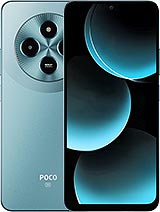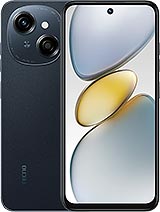Poco X7 alternatives
Tap above to see alternatives.
Redmi A4 alternatives
Tap above to see alternatives.
4x2.5 GHz Cortex-A78
4x2.0 GHz Cortex-A55
2x2.2 GHz Cortex-A78
6x2.0 GHz Cortex-A55
8GB 256GB (UFS 2.2)
4GB 128GB (UFS 2.2)
f/1.5, 26mm (wide), 1/1.95", 0.8µm, PDAF, OIS
8 MP
f/2.2, 15mm, 120˚ (ultrawide), 1/4.0", 1.12µm
2 MP
f/2.4, (macro)
f/1.8, (wide)
1080p@30/60/120fps
f/2.2, 25mm (wide), 1/4.0", 0.7µm
f/2.2, (wide)
SIM1: Nano, SIM2: Nano
SIM1: Nano, SIM2: Nano
14 5G bands
n1, n2, n3, n5, n7, n8, n20, n28, n38, n40, n41, n48, n77, n78
7 5G bands
n1, n3, n5, n8, n28, n40, n78
In this performance comparison, the Poco X7 with its Mediatek Dimensity 7300 Ultra (4nm) performs better than the Redmi A4 with the Qualcomm Snapdragon 4s Gen 2 (4nm), thanks to superior chipset efficiency.
Poco X7 launched with Android 14 and will receive updates until Android 17, whereas Redmi A4 launched with Android 14 and will get Android 16. Poco X7 will get security updates until 2029 (approx. 4 years), while Redmi A4 is supported till 2028.
Poco X7 features a superior AMOLED display, while Redmi A4 comes with an LCD panel. Both smartphones offer the same 120 Hz refresh rate. Poco X7 also boasts a brighter screen with 3000 nits of peak brightness, enhancing outdoor visibility. Notably, Poco X7 offers a higher screen resolution, resulting in sharper visuals and more detailed content.
Poco X7 comes with a larger 5500 mAh battery, which may offer longer usage on a single charge. Poco X7 also supports faster wired charging at 45W, compared to 18W on Redmi A4.
Poco X7 includes an IP69 rating, while Redmi A4 lacks an official IP rating.
¹ Scores can vary even with the same chipset due to RAM, thermals, and software optimization.












